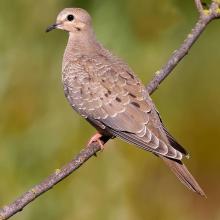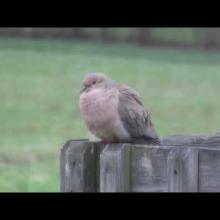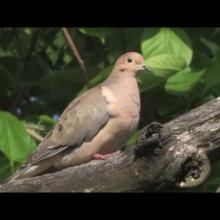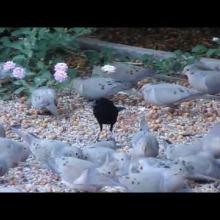

Join BirdNote tomorrow, November 30th!
Illustrator David Sibley and actor H. Jon Benjamin will face off in the bird illustration battle of the century during BirdNote's Year-end Celebration and Auction!
Too Many Doves?
I recently did a post called Mourning Doves by the Numbers, which had some interesting stats in it, like one that states that Mourning Doves can breed up to 6 times each summer. Being from the Chicagoland area, I like to say that they "breed early and breed often"!
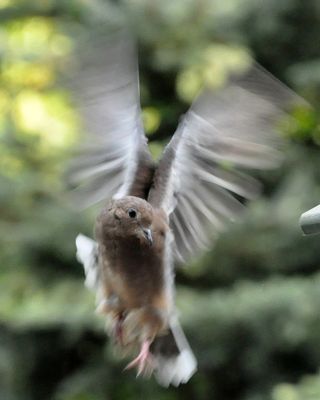
All that breeding leads to an estimated fall population of 400 million. That's a lot of doves and at times, it seems like there's half of that population waddling through our yards or pooping in our birdbaths.
Perhaps it is because of this abundance, or maybe the way they amble through the yard with that "duh-deet" type gait that keeps them off most people's Top 10 list of "Favorite Feeder Birds." And, sad to admit, when we lose a dove to a hawk or window strike, we often don't mourn its loss.
But we should mark its loss in our mind, as we do the loss of any bird. And when the cause of that loss is within our control (e.g., cat predation, window strike, etc.), we should take steps to mitigate that loss. We should not take the doves' abundance for granted. There are financial institutions called "too big to fail;" but I proffer that there is no bird species "too numerous to become extinct." In fact, we have lost to extinction a bird that used to number in the BILLIONS.
The Passenger Pigeon had been amongst the most abundant bird on the continent, estimated to number 6 billion birds. 6,000,000,000. That's 15 times the estimated population of Mourning Doves.
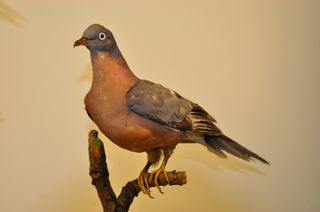
Cornell Lab of Ornithology
Today, sadly, the Passenger Pigeon population is zero. The last one died (in captivity) in 1914.
Just a little over 100 years ago from my perch here in upstate New York, I could have witnessed their mass movements. I've read that flocks of Passenger Pigeons would blacken the sky as millions upon millions of birds passed overhead. The trees in the coniferous forest that likely preceded mine may have been passed over en route to breeding grounds rich in berries and fruits as well as oaks, hickories, and beechnuts.
What could lead to the disappearance of six billion birds? Many things, starting with low reproductive rate and significant natural predation, exacerbated by their extreme numbers, extreme flocking habits, and extreme foraging needs. All these factors then collided head-on with a burgeoning country in an adolescent growth spurt.
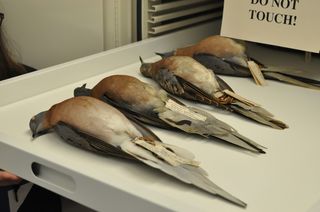
Cornell Lab of Ornithology
It is truly mind-boggling to think of 6 billion birds being eliminated from existence, but it proves this fact: No bird is guaranteed its place on this earth.
It's hard to imagine the Mourning Dove becoming extinct, but the lesson of the Passenger Pigeon should not be lost to us. Take a little time today to give your doves a little love, and be grateful they're in your world.
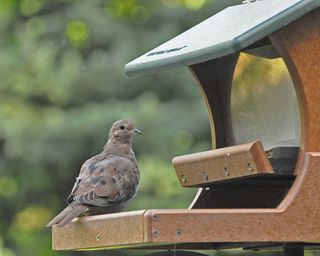
Photographs of Passenger Pigeons taken at the Cornell University Museum of Vertebrates housed at the Cornell Lab of Ornithology.
Sources: The Passenger Pigeon essay by Jerry Sullivan; Birds of North America Online
Post originally appeared on The Zen Birdfeeder http://wildbirdsunlimited.typepad.com/the_zen_birdfeeder/2012/09/too-ma…


